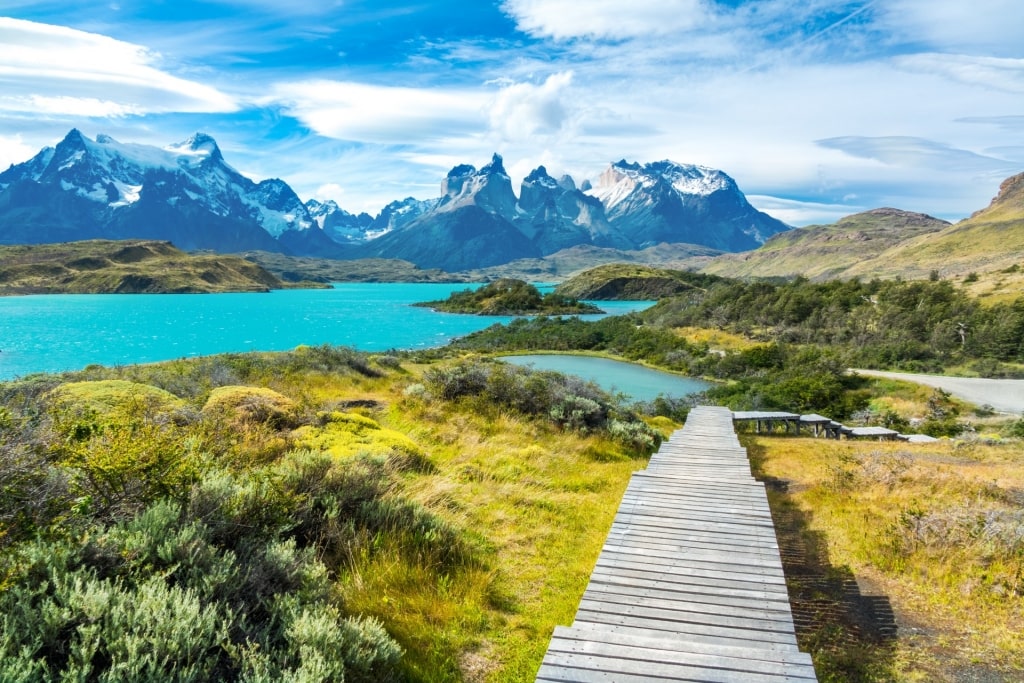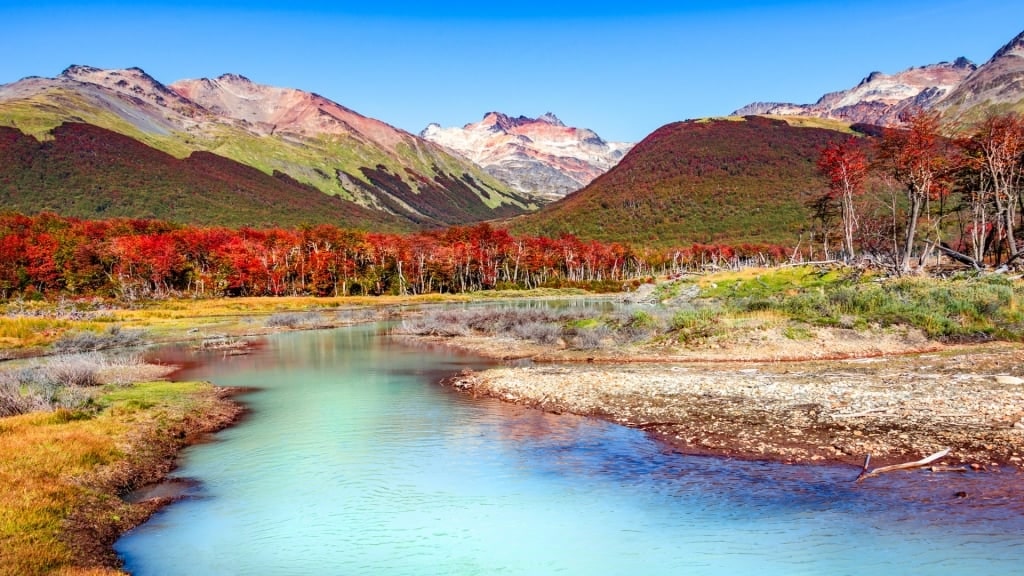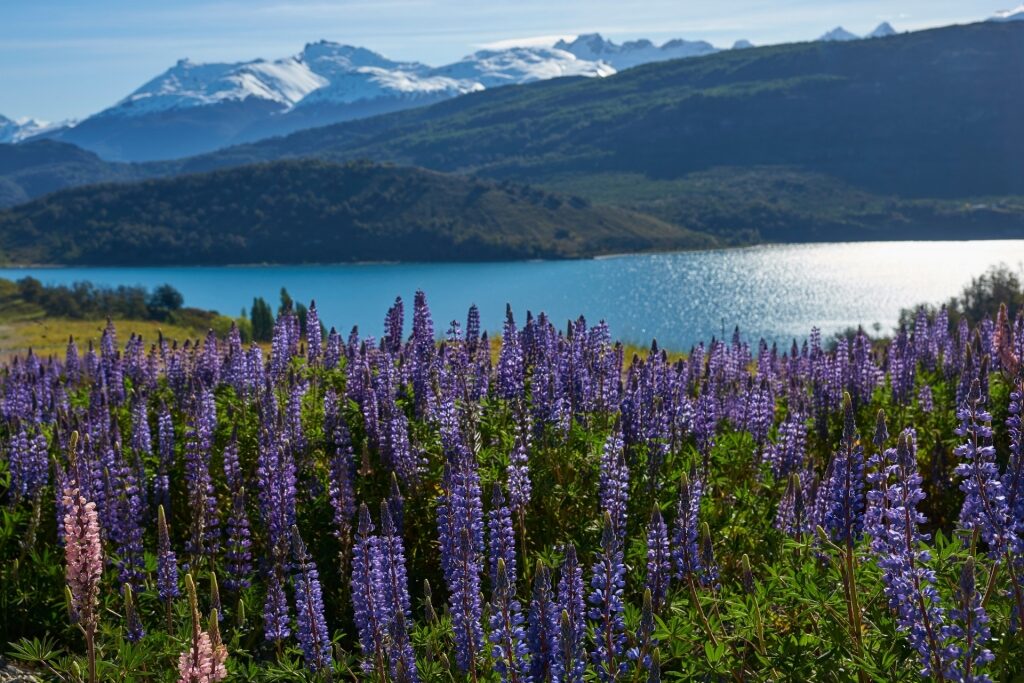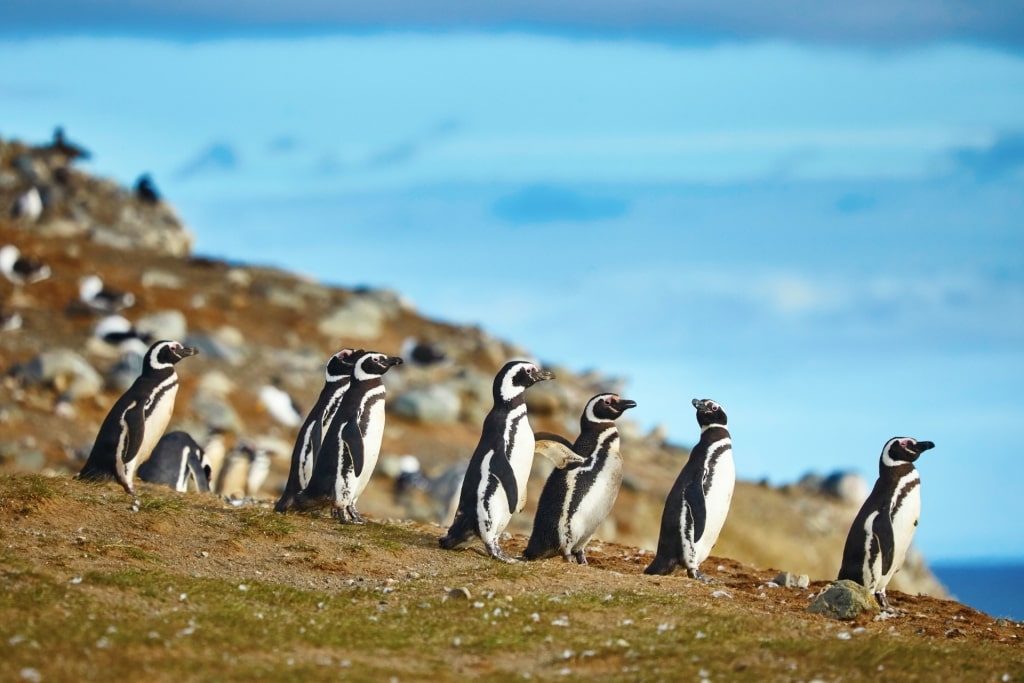The best time to visit Patagonia is during the short summer season, between December and February.
Patagonia is a vast place, covering large parts of southern Chile and Argentina. For those who love outdoor adventure, it’s also a place to hike, kayak, horse-ride, spot birds, or climb. All of these activities are better enjoyed when the weather is fine.
Everything is relative, of course; Patagonia is a long way south, and is never going to be hot. It is, however, an exceptionally beautiful place to visit at any time of year.
Visiting Patagonia By Season
Summer

Torres del Paine National Park
Summer (December-February) is a great time to visit Patagonia, as the weather is then relatively balmy. Daytime temperatures average above 50ºF (10°C), and even warmer further north, with rainfall at its lowest.
Days are long, with up to 17 hours of light, and nights are cool. The unique flora of Patagonia is also showing at its best.
The only downside is that winds are a constant presence. They can bring temperatures down, but there are big variations anyway in such a large area.
This is the best time for hiking, kayaking or rafting, bird watching, and fishing. Photographers will enjoy the high, clear skies, but the summer light can be harsh, so the golden hours around dawn or dusk are key.
Fall
As temperatures fall from March through May, so do the leaves, bringing out the amazing autumnal colors of Patagonia’s forests. The green, yellow, orange, and red leaves add even more beauty to these epic landscapes, with their blue lakes and snow-capped peaks.
Cooler temperatures also make Patagonian wildlife more active, and fewer people means your chances of a memorable encounter are better. Hiking trails are still at their best, although weather can be unpredictable.
Later in the season, rain, snow, and falling temperatures become more of an issue when planning tours. Strong winds can also add to the wind chill.
Although it’s somewhat true even in summer, spring and fall are times when you can experience four seasons in a day. The best solution is a good clothing layering system.

Tierra del Fuego National Park
Winter
From June through August is the time for skiing and other winter activities in Patagonia. Temperatures are usually below 40ºF (4.5°C) during the day, and much lower at night.
Fresh snowfall, almost every day, coats the landscape in ethereal beauty. While glaciers and mountains are at their very best, the harsh weather can disrupt any travel plans.
However, fewer visitors means many facilities are closed. Unless you are a keen skier or snowboarder, or an avid whale-watcher, this is not the season for you.
Spring
Spring starts in September, and temperatures slowly warm up into November. Daytime temperatures remain very unpredictable, though, and nights are still cold.
You can also expect strong, sometimes very strong, winds. The better news is that rainfall is at its lowest, with September being the driest month.
Visitor numbers are slow to pick up, so this can be a good time to avoid crowds. The early spring flowers are also a beautiful, and welcome, flash of color.

Northern Patagonia
When Is Rainy Season?
The wettest month in Patagonia is May, but April also sees heavy rain. November through January is another time when a raincoat will be needed, although showers tend to be less intense during the summer months.
Winds can be more of an issue, and Patagonia is noted for being windy almost every day. Winds are their highest in summer, when they can reach speeds of up to 70 mph, and lowest in winter.
When Is High Season?
Summer sees Patagonia at its busiest, with the warm weather marking its high season. Temperatures can reach the high 60s, but seldom higher.
Long days and the mild weather are perfect for hiking or other outdoor activities. With Chileans and Argentines on holiday themselves, there are a lot of people about but the vast expanses swallow them up easily.
When Is Shoulder Season?
Spring and fall are the shoulder seasons in Patagonia, when the weather is still mild. These are also good seasons for wildlife viewing, with fewer visitors making animals more likely to appear.
Many would argue that April is the best time to go to Patagonia, as the colors of fall add their special appeal to the glorious landscapes. The weather can still be mild, although you can never rule out some bad days.
Early spring and late autumn are riskier for weather, with rain likely. Winds are milder, but colder, and snow is always a possibility.

Magellanic penguins
When Is Low Season?
Its harsh weather makes Patagonia’s winters a low season for visitors. Of course, it’s a good time for those who love ice and snow.
Skiing, and snowshoeing are popular with adventurers, but you do need to be equipped for the conditions. With few visitors around, many places are closed.
Would you like to experience Patagonia’s natural beauty for yourself? Browse Celebrity’s cruises to Patagonia to find the perfect adventure.



